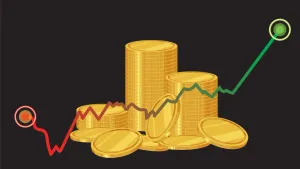Charles Schwab and Fidelity are the two titans of the brokerage world, both offering $0 commission trading and robust platforms.
Yet, when the focus narrows to ETFs (Exchange-Traded Funds)—the low-cost, diversified tool every beginner should be using—subtle differences emerge in fees, accessibility, and cash management that make one a clearer winner.
The best brokerage for a beginner ETF investor is the one that minimizes friction, eliminates fees, and allows you to put every penny to work immediately.
🏆 The Winner: Fidelity Investments
Fidelity is the overall superior choice for beginners building an ETF portfolio. Its advantages lie in removing barriers to entry (like the need to buy full shares) and maximizing returns on cash.
ETF Accessibility (The Fractional Share Barrier)
For beginners practicing Dollar-Cost Averaging (DCA) with a small account, the ability to buy fractional shares is the most critical feature. This eliminates "cash drag"—leaving small, uninvested cash balances on the sidelines.
The Clear Difference: $1 Minimums for All ETFs
- Fidelity's Advantage: Fidelity offers fractional shares (called Stocks by the Slice) on over 7,000 U.S.-listed stocks and ETFs, including almost all major third-party ETFs (Vanguard, iShares, etc.). You can buy $1.00 worth of virtually any ETF you choose.
- Schwab's Limitation: Schwab's Stock Slices program is strictly limited to the 500 stocks in the S&P 500 Index. This is a major drawback for ETF investors.
Why This Matters for a Beginner Investor
If you want to implement the popular 3-Fund Portfolio, you need international and bond exposure (like the Vanguard funds VXUS and BND).
- At Fidelity, you can set up an automatic purchase for $100 per month, split equally among three ETFs, and every penny will be invested.
- At Schwab, you are forced to buy whole shares of those non-S&P 500 ETFs. If an ETF costs $75, your $100 contribution will leave $25 uninvested. This cash drag harms your long-term growth and complicates your DCA strategy.
Verdict on Accessibility: Fidelity's fractional share program is the decisive factor, as it perfectly aligns with the needs of the small-account, disciplined investor.
The Cost of Cash (The Hidden Fee)
The second major difference is what happens to your cash when it's not invested. This money sits in a sweep account until you decide to invest it.
🏆 Winner: Fidelity
- Fidelity's Auto-Sweep: Fidelity automatically sweeps all uninvested cash balances into a high-yielding money market fund (like SPAXX), which pays a competitive yield (currently around 3.89% APY as of late 2025). This money is earning a high rate without you having to lift a finger.
- Schwab's Default Sweep: Schwab’s default sweep program is a bank account that pays a notoriously low interest rate (currently around 0.05% APY). You must manually buy a separate money market fund to get a high yield.
The Verdict on Cash: Fidelity’s automation eliminates the risk that a beginner forgets to invest their cash, ensuring that all their money is always working for them at a competitive rate.
Proprietary Funds and Research Tools
While accessibility is key, the cost and quality of the tools matter as your account grows.
ETF and Mutual Fund Costs
Both firms offer low-cost proprietary funds. However, Fidelity still has an edge in the mutual fund space that benefits the ETF investor.
- Fidelity's ZERO® Funds: Fidelity offers four flagship mutual funds that charge a 0% annual expense ratio. While not ETFs, these funds give beginners the lowest cost possible for U.S. and International index tracking.
- Schwab's Proprietary ETFs: Schwab offers an excellent lineup of ETFs (SCHB, SCHD, SCHF, etc.) that are among the cheapest in the industry (many at a 0.03% expense ratio). While not free, they are extremely competitive.
Trading Platforms and Research
For active traders, Schwab maintains a powerful advantage due to a major acquisition.
- Schwab's Powerhouse (thinkorswim): Schwab acquired TD Ameritrade, and with it, the thinkorswim (ToS) platform. ToS is considered one of the most powerful and comprehensive desktop trading platforms available for active ETF, stock, and options traders.
- Fidelity's Focus (Active Trader Pro): Fidelity offers its own professional desktop platform, Active Trader Pro. While excellent for research, it lacks the deep customization and robust features that ToS offers for complex technical analysis and order types.
Verdict on Tools: For a buy-and-hold ETF investor, both firms offer phenomenal, free research. For a beginner who may transition to active trading, Schwab has the better professional toolkit.
Final Verdict: The Best for the ETF Investor
For the core task of building a low-cost, diversified ETF portfolio, Fidelity is the clear winner for the beginner investor.
The combination of the $1 fractional share minimum for any ETF, the automated high-yield cash sweep, and the availability of completely free mutual funds creates a platform that maximizes efficiency, minimizes fees, and eliminates all the subtle traps that can derail a small-account investor.
Once your account grows beyond $25,000 and you begin looking into active trading strategies or specific technical charting needs, the superior platform thinkorswim may make Schwab more attractive. But for starting out, Fidelity is simply easier and cheaper.
This video discusses the key factors beginners should weigh when choosing between these two brokerage titans, focusing on trading tools and cost. The Big Differences Between Fidelity vs Schwab Beginners Should Know About.






